After my morning at Jackson Bay at the Southern tip of the West Coast, I started to make my way up the coast towards Arthur’s Pass which would eventually take me over the mountains back towards Christchurch. With a bit of extra time and a beautiful, sunny day, I decided to make a few stops along the way.
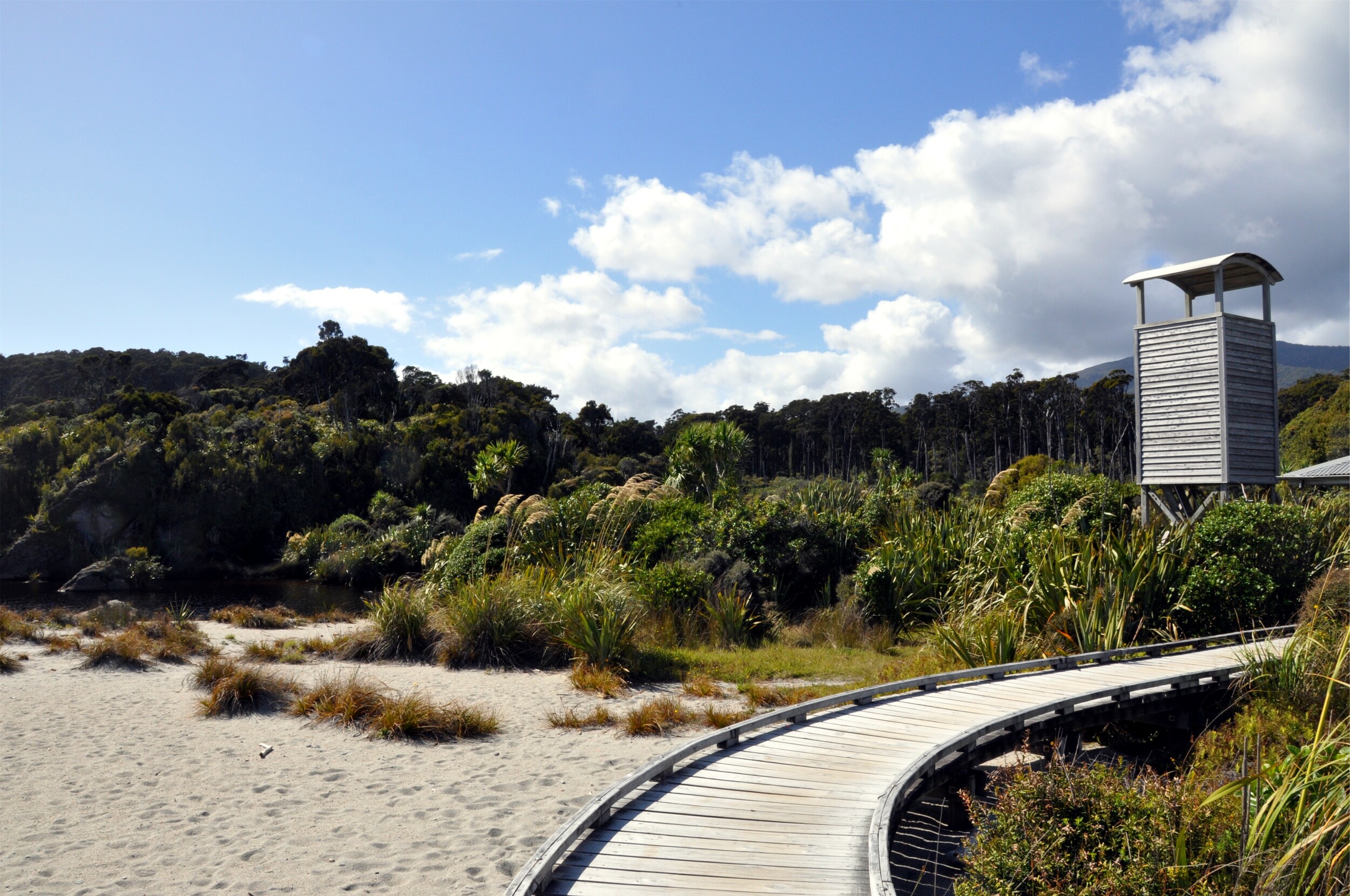
When planning trips, it is always hard to know which stops are going to be worthwhile, so when I pulled off the Highway into an oddly shaped carpark at Ship Creek, I wasn’t sure what to expect. I followed the path to the information shelter and was surprised to learn that the building at the edge of the pavilion was in fact a tower that you could climb to get views out over the dunes.

Inside the tower a series of wooden ladders took me to a lookout platform which had great views over the mouth of Ship Creek and the sand dunes to the south. This area marks the northern tip of the Haast coastal plain, an unusual ten kilometre wide stretch of coastal dunes and forests which runs between the foot of the Southern Alps and the ocean.

I followed the boardwalk through the dunes to the dune lake; a freshwater lake that formed in the ridges between the sand dunes and forests. The lake is surrounded by kuta (a type of sedge grass), which will eventually cause the lake to infill by creating a muddy swamp that in turn will allow forests to take over this area.
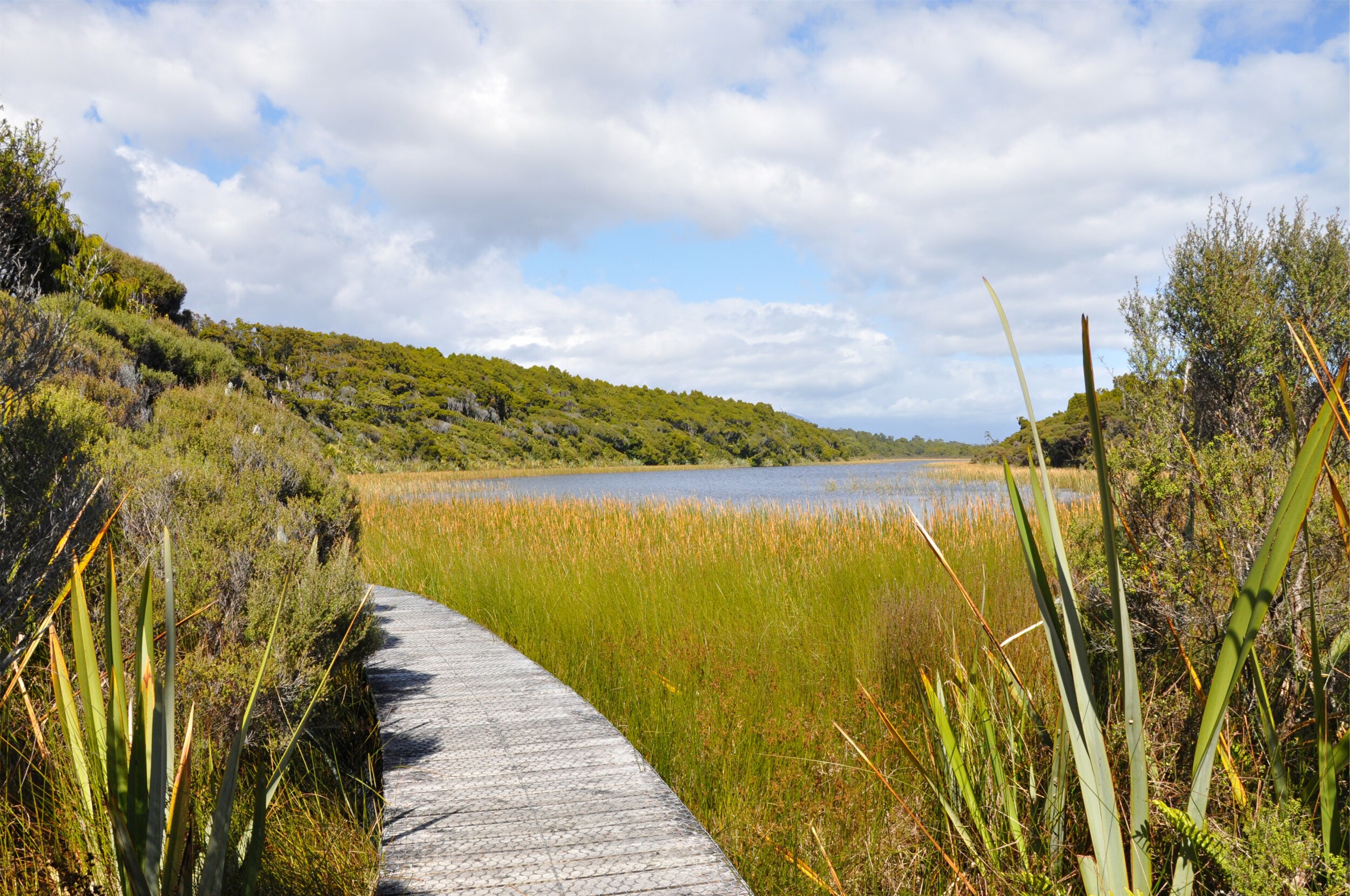
The boardwalk took me back to the carpark where I decided to check out the Kahikatea Swamp Forest track which ran along the edge of Ship Creek. The water in Ship Creek was the dark, tea-stained brown that we are used to seeing on the West Coast caused by the tannin and humic acid that leaches into the soil from the decaying vegetation.
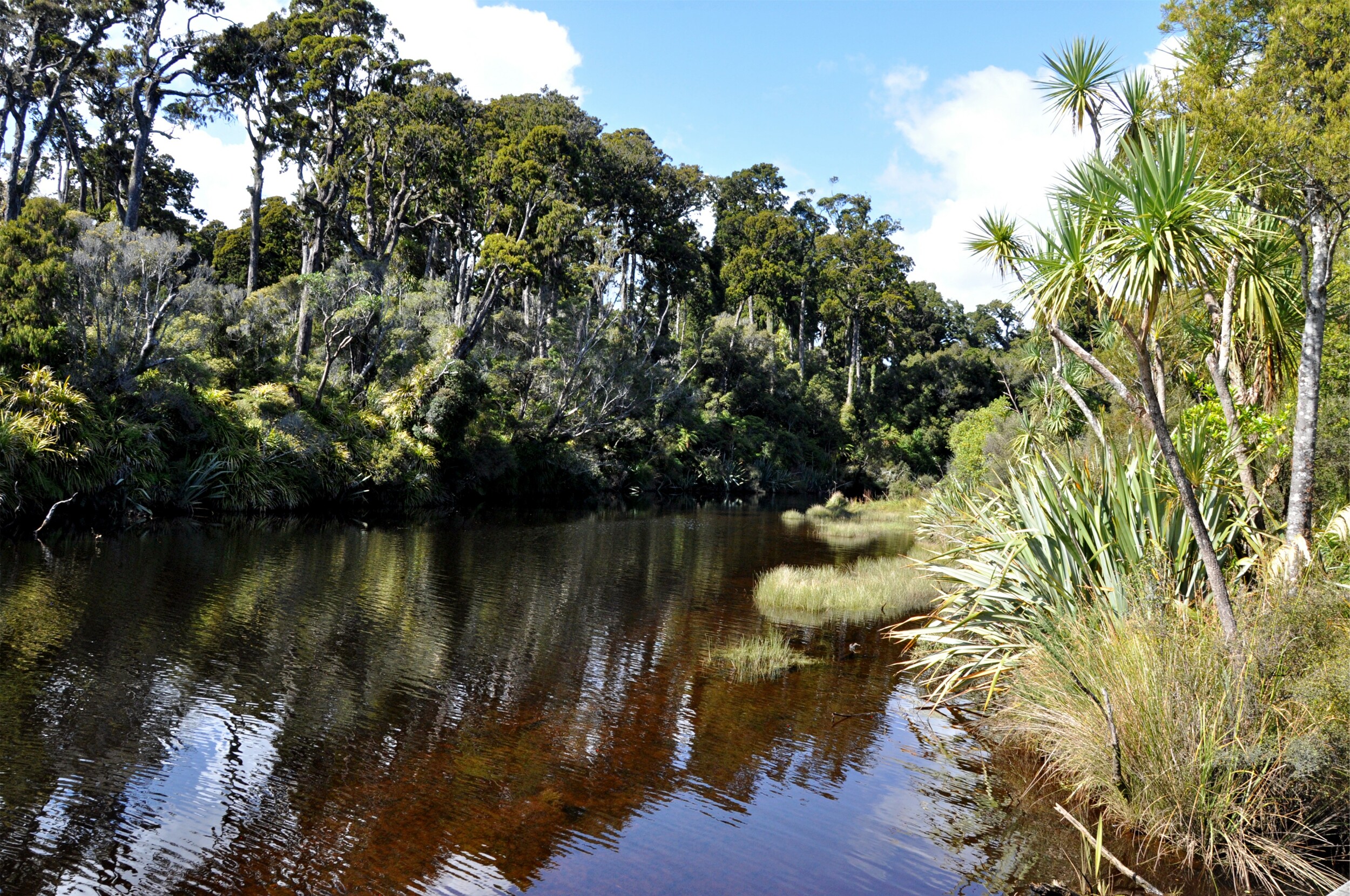
Kahikatea were given the name English name White Pine by Captain Cook in 1769 when he visited the area and thought that the tall, straight trees would make excellent ship spars. The trees proved to be too soft for structural timbers, but many were still felled as the area was cleared for agriculture. It was discovered that the felled Kahikatea timber was ideal for packaging as the pale, odorless wood did not taint or stain the products.
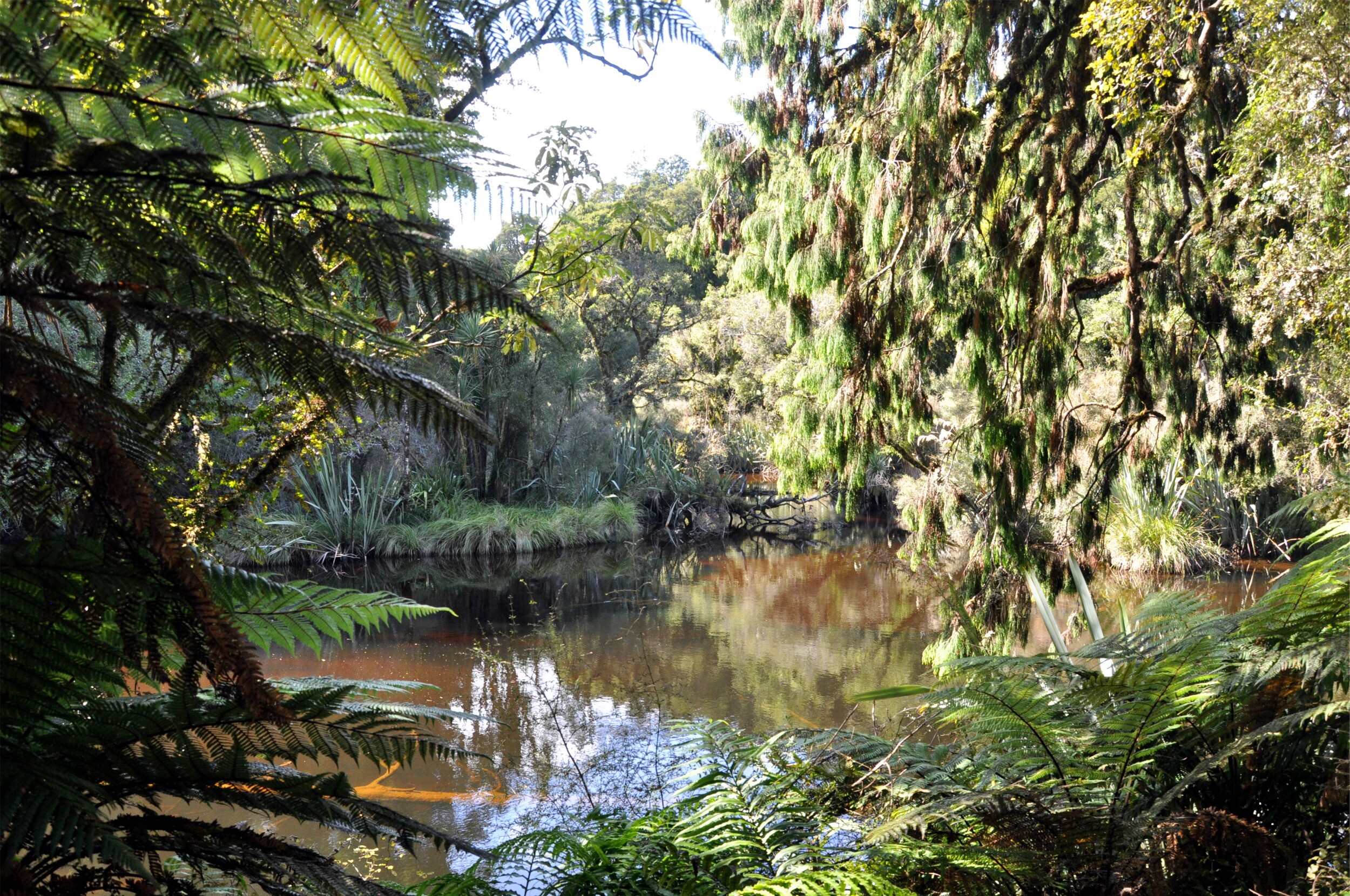
Despite the brown colour, the water remains incredibly clear and the nutrient-rich water is home to many different species of fish including the Kokopu, a type of galaxiid that lack scales and instead have a thick leathery skin covered in a type of mucus. The unusual Kokopu, together with the large eels that live in these waters made it feel like I was stepping back in time to an ancient swamp.
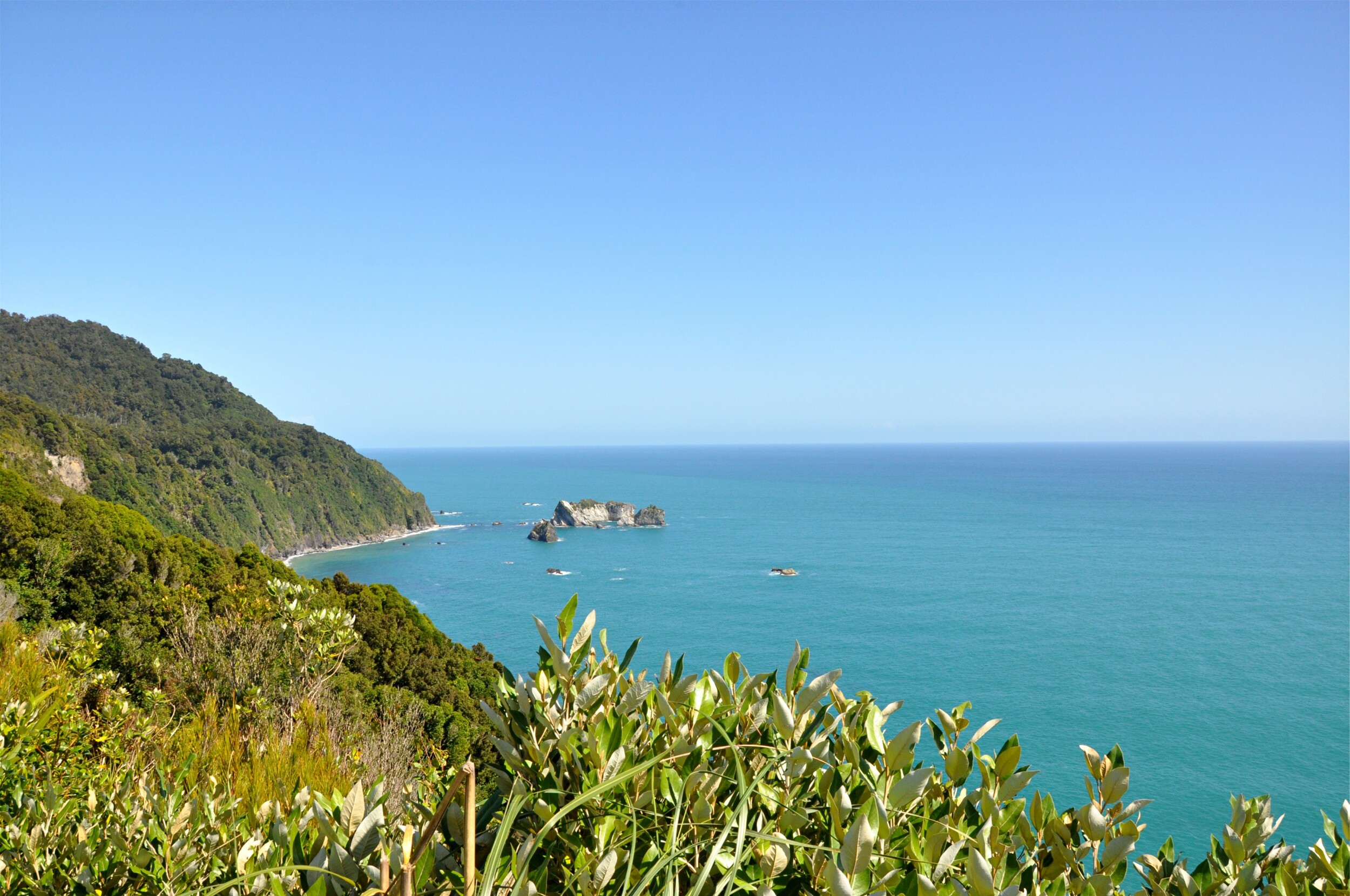
Leaving the swamp behind, I continued up the coast towards Knights Point; an entirely different landscape from Ship Creek just a few kilometres down the coast. The cliffs and rock stacks here are made from uplifted basalt lava flows that have yet to be eroded by the ocean. Perched on the clifftops in the warm sunshine it was the perfect picnic spot before continuing north up the coast.
